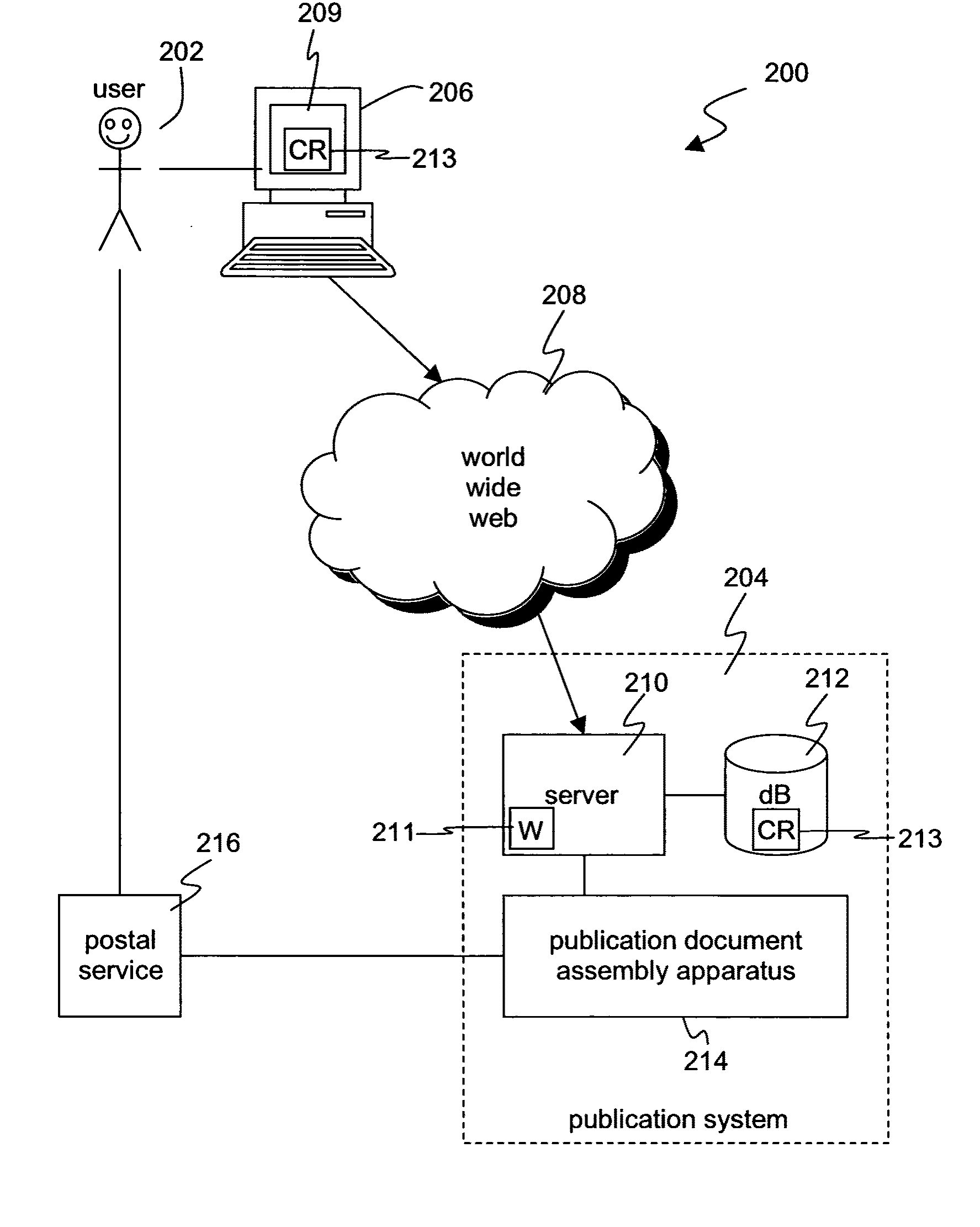Method for producing a multiple-section publication document
a multi-section publication and document technology, applied in the field of printed publications, can solve the problems of high cost of high-volume print technologies, large collating apparatus, complex and costly machines, etc., and achieve the effects of low cost, high quality, and efficient and accurate performan
- Summary
- Abstract
- Description
- Claims
- Application Information
AI Technical Summary
Benefits of technology
Problems solved by technology
Method used
Image
Examples
Embodiment Construction
[0085] In one embodiment of the invention, a method of producing a customised or bespoke multiple-section publication document such as a magazine is provided. Each publication document includes a plurality of pre-printed sections, also known as signatures. Each pre-printed section can, for example, be an extract from or a specially-prepared short edition of a conventional (i.e. non-customised) magazine. In one preferred example, each pre-printed section comprises a compilation of sixteen pages taken from a commercially available magazine.
[0086] Each pre-printed section comprises pages bearing content relating to a particular subject area, known hereafter as the content type of the pre-printed section. In other words, the content type of a pre-printed section indicates the subject matter of the content of that section. Such content typically comprises text and / or imagery, and could include, for example, advertisements, articles, news features, listings and so on.
[0087] As will be e...
PUM
 Login to View More
Login to View More Abstract
Description
Claims
Application Information
 Login to View More
Login to View More - R&D
- Intellectual Property
- Life Sciences
- Materials
- Tech Scout
- Unparalleled Data Quality
- Higher Quality Content
- 60% Fewer Hallucinations
Browse by: Latest US Patents, China's latest patents, Technical Efficacy Thesaurus, Application Domain, Technology Topic, Popular Technical Reports.
© 2025 PatSnap. All rights reserved.Legal|Privacy policy|Modern Slavery Act Transparency Statement|Sitemap|About US| Contact US: help@patsnap.com



